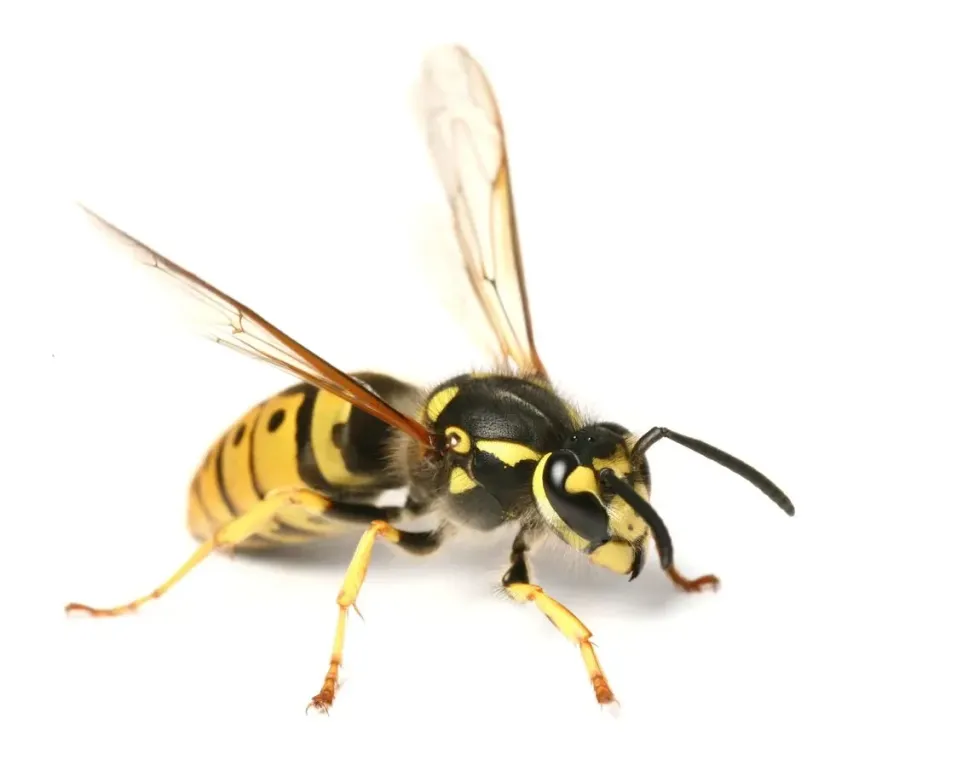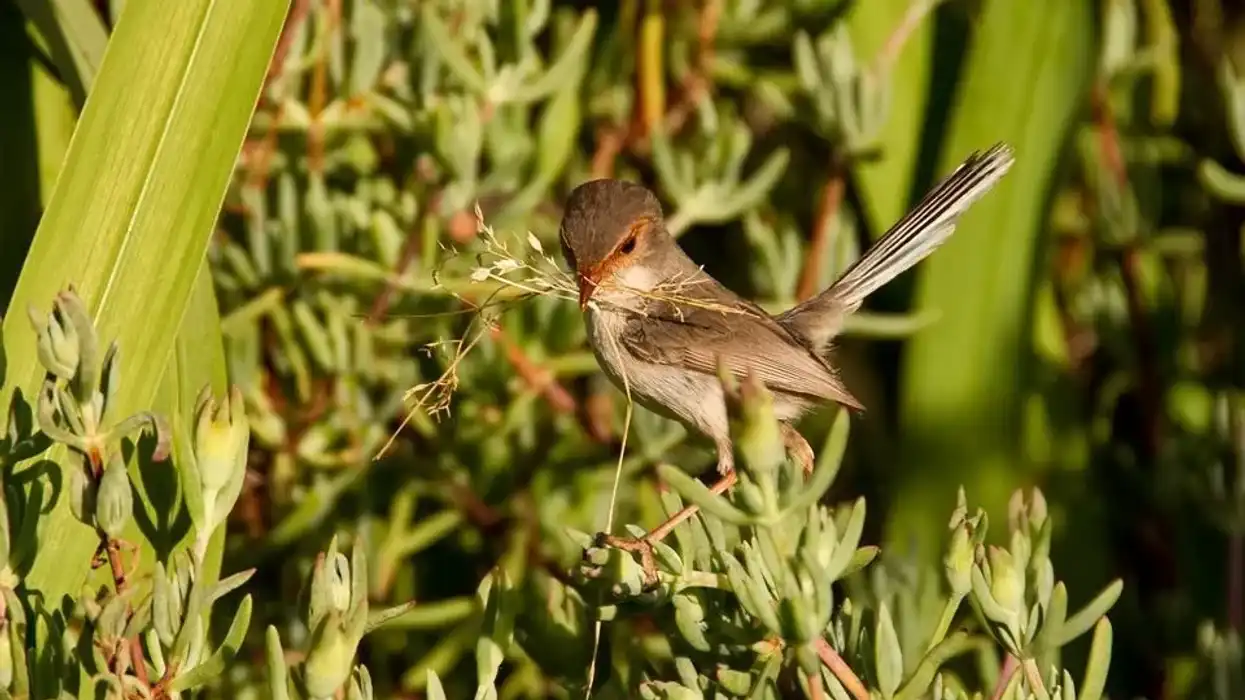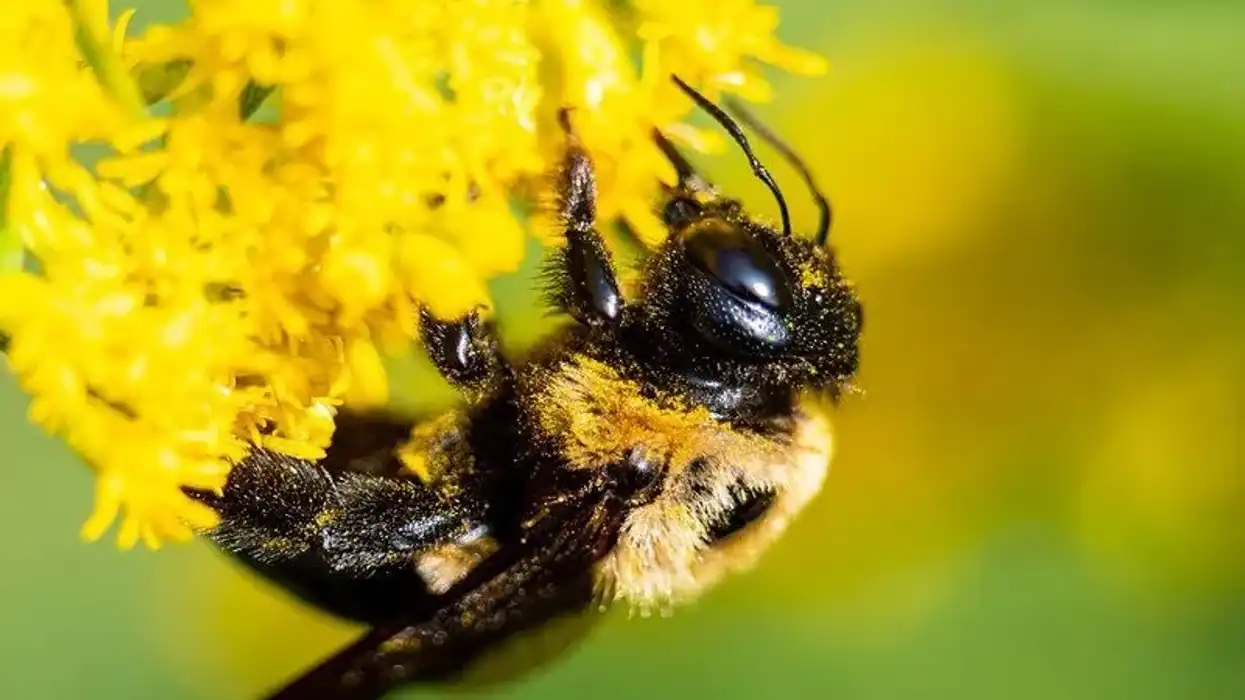Do you enjoy studying different insect species? These facts about wasps will surely keep you hooked.
Wasps belong to the family of Vespidae, with innumerable species and sub-species strewn across the world. The life cycle of wasps is intriguing as they are very different from the bees (although they have a somewhat similar appearance and behavior).
They can sting just like a bee but do not die - they can offer continuous blows.
They have an interesting way of interacting with their hive mates when in need. And if you are wondering how can just an insect thrive in the face of adversity, then you might be thrown off-grid to know that these pests can actually offer pest control services!
If you find these wasp facts informative, then don't forget to take a look at some more interesting facts about wasps, such as the yellow jacket wasp and mud dauber wasp.
Wasp Interesting Facts
What type of animal are Wasps?
Wasps are parasitic insects.
What class of animal do Wasps belong to?
Wasps belong to the class of Insecta.
How many Wasps are there in the world?
Wasps are parasitic insects that are available in abundance throughout the world. It is almost impossible to provide accurate data about the exact number of wasps in current existence. However, they have been identified to exist across the globe in the diversity of more than 30,000 species.
Where do Wasps live?
Wasps can be found in almost every corner of the world. They can be found in the United States, Europe, Asia, Africa, and other places with dense forests and grasslands.
What is a Wasp's habitat?
Wasps thrive in dense forest spaces, thickets, shrubs, grasslands, woodlands, or even urban spaces like gardens, fields, and other similar areas.
Who do Wasps live with?
Wasps are normally of two types - solitary wasps and social wasps. Solitary wasps are endowed with the responsibility of constructing a colony.
Once a new colony is formed, the queen laying eggs is restricted to the nest while the social wasps engage in protecting it. Social wasps are generally the workers who find food and defend the nest from external attacks or threats. The yellow jackets and hornets are social wasps.
Wasps can live a solitary or social life, but a majority of the population thrives in hives. They are not commonly found in close contact with humans.
How long do Wasps live?
The longevity of wasps is highly dependent on their species. For instance, while worker wasps can live for 12-22 days, the queen might enjoy a longer span of almost a year. However, on average, wasps last for a few days with a maximum span of 22 days.
How do they reproduce?
The breeding process in the male and female wasps initiates with the nesting period when the females mate with the males and store the sperm for some time. The social wasps, like the paper wasps, build nests for their queen while the queen isolates herself in the nest.
Not only do the worker wasps build nests, but they also cater to the queen by bringing food and protecting the nest from harm. The queens eventually lay eggs in the nest and wait till they hatch.
The job of the queen is to enlarge the colony and raise more and more female wasps.
Every summer or fall, the queen finds a new mate to build a new nest. In this way, the reproduction process continues, and the population of wasps expands.
What is their conservation status?
There are innumerable wasps spread across the entire world. The International Union For Conservation Of Nature (IUCN) Red List categorizes wasps according to the species. Most are Data Deficient whilst Macropis europaea is categorized under Least Concern.
Wasp Fun Facts
What do Wasps look like?
The most common variations among the several species of wasps are the yellow jackets, hornets, and paper wasps. As the name suggests, the yellow jackets are yellow in color with black streaks all over the body.
They come with black antennae, a set of six legs, and two wings. On the other hand, a hornet has a brownish color with distinguishable orange spots and streaks, and they often have white spots on their heads.
Lastly, a paper wasp also comes in the shade of brown with yellow or even red streaks.
Nevertheless, they are different from the former as they possess longer legs and a somewhat slender body structure. Overall, these stinging insects are also very different from ants or bees (although they are relatives).

How cute are they?
Wasps do not score much on their cuteness quotient. In fact, on the contrary, you might freak out or get grossed out at the sight of one!
A majority of the insects evoke the feeling of disgust among human beings. Although wasps come in bright shades, you might want to hurl a shoe instantaneously upon locating one - perhaps the same treatment that pests like cockroaches encounter. Moreover, their aggressive nature (of stinging) diminishes the cuteness quotient by a great deal.
How do they communicate?
Wasps are insects that do not engage in verbal forms of communication. They interact by releasing certain chemical compounds (such as pheromones) and hormones to signal danger, alert their compatriots, and summon others to allocate food.
It can be said that they communicate with the help of smell. Modern research has recently concluded that these wasps engage in drumming their gasters (or abdomens) after tracing food. The act of drumming sends out signals to the other worker wasps about the presence of food nearby.
How big are Wasps?
Wasps have an average size and are not very big. Their length can go up to 2 in (5 cm).
This means that they are not as large as a bee. However, the hornet is the largest among all the wasps' species, with the ability to combat and devour a spider as large as the tarantula. Wasps have a more slender body as compared to a bee.
How fast can Wasps fly?
Wasps have an average speed and can cover a few miles. Among all the species, the Asian hornet is known to acquire the fastest speed of 23.8 mph (40 kph). The speed of the yellow jackets can reach 43.5 mph (70 kph).
How much do Wasps weigh?
The weight of a wasp depends on its species. Normally, the weight of a common wasp ranges around 0.003 oz (90 mg). The weight of the worker wasps ranges between 0.00035-0.0007 oz (10-19 mg), and the paper wasps have a similar weight range, while a drone wasp can weigh up to 0.005 oz (150 mg).
What are their male and female names of the species?
No specific names have been attributed to the species, so they are referred to as male drones and female wasps, respectively.
What would you call a baby Wasp?
According to its growth or development stage, a baby wasp can be regarded as a larva or even pupa.
What do they eat?
Wasps are omnivores which implies that they enjoy a diet enriched with several nutrients. Solitary wasps generally survive mostly on nectar that they derive from flowers or steal from the honeycombs. However, they feed their offspring with insects like caterpillars, spiders, or flies. The requirement for energy is satisfied mainly through the sugar or glucose derived from nectar.
Are they dangerous?
Wasps are stinging insects and can prove to be very dangerous when they feel threatened or agitated for some reason. Wasps themselves are not much of a problem as they like to stick to their work.
However, if they encounter a situation that causes them to feel terrified, then there are high chances that they would attack. This attack is nothing but a defense mechanism.
These insects are gifted with stingers that are quite different from those of the bees. Unlike bees, the stingers of the species are free of barbs that might get stuck inside human or animal flesh, and therefore, unlike bees, wasps can offer multiple stings.
Wasp stings have the potential to inflict severe pain. Pheromone is emitted when wasps sting, and this acts as a signal to call an army of soldier wasps that comes to the rescue of the threatened insect.
Would they make a good pet?
Although several attempts have been made to domesticate wasps by maintaining a wasp colony, they are best left with their hive members. Paper wasps are categorized under social wasps, and they might survive as a pet, but their longevity is greatly affected when they are shifted from their natural habitat and colony.
Hence, it can be summed up that wasps do not make good pets as they like to be on their own.
Did you know...
Here are some fun facts about wasps and bees that are stupefying.
Although wasps are not too big in size, they know how to distinguish between harmful and harmless.
Solitary female wasps can thrive independently.
Wasps create papery nests made of wood fibers while the bees construct nests out of their own secretion of some waxy substance.
Wasps highly benefit our ecosystem as they eliminate almost all pests by preying on them.
Every spring, a new colony is created by the queen.
Although they lack teeth, they have antennae and a sweet tooth!
You might find them in the United States of America, the United Kingdom, Africa, and several other places, but you won't find a single wasp in Antarctica.
Solitary wasps act defensively, while social wasps use their stings to render severe attacks.
Wasps have the power of facial recognition. They can identify you just like they can identify their hive members.
Different types of Wasps
There are innumerable species of wasps all over the world. The species that have gained significance are the Asian giant hornet, European hornet, paper wasp, yellow jacket, red paper wasp, Australian hornet, and several others. There are 30,000 variations of the species and many other sub-species.
Wasps and humans
Wasps generally avoid human habitation as they often feel threatened by human presence. However, wasps have benefitted human civilization by offering great pest control solutions by feeding on other pests that damage crops.
Nevertheless, they can be dangerous (especially when prone to allergies from venomous stings) and need to be removed. The best way to get rid of wasps is by spraying insecticides.
Here at Kidadl, we have carefully created lots of interesting family-friendly animal facts for everyone to discover! Learn more about some other arthropods including honey bee, or atlas beetle.
You can even occupy yourself at home by drawing one on our Wasp coloring pages.










